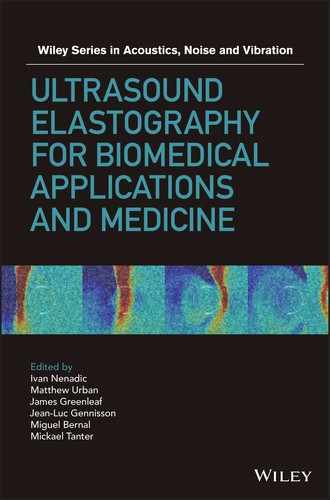Book Description
Ultrasound Elastography for Biomedical Applications and Medicine
Ivan Z. Nenadic, Matthew W. Urban, James F. Greenleaf, Mayo Clinic Ultrasound Research Laboratory, Mayo Clinic College of Medicine, USA
Jean-Luc Gennisson, Miguel Bernal, Mickael Tanter, Institut Langevin – Ondes et Images, ESPCI ParisTech CNRS, France
Covers all major developments and techniques of Ultrasound Elastography and biomedical applications
The field of ultrasound elastography has developed various techniques with the potential to diagnose and track the progression of diseases such as breast and thyroid cancer, liver and kidney fibrosis, congestive heart failure, and atherosclerosis. Having emerged in the last decade, ultrasound elastography is a medical imaging modality that can noninvasively measure and map the elastic and viscous properties of soft tissues.
Ultrasound Elastography for Biomedical Applications and Medicine covers the basic physics of ultrasound wave propagation and the interaction of ultrasound with various media. The book introduces tissue elastography, covers the history of the field, details the various methods that have been developed by research groups across the world, and describes its novel applications, particularly in shear wave elastography.
Key features:
- Covers all major developments and techniques of ultrasound elastography and biomedical applications.
- Contributions from the pioneers of the field secure the most complete coverage of ultrasound elastography available.
The book is essential reading for researchers and engineers working in ultrasound and elastography, as well as biomedical engineering students and those working in the field of biomechanics.
